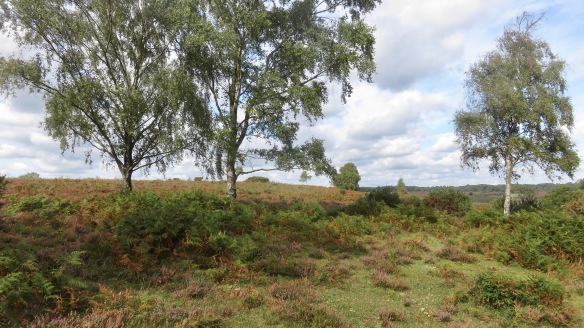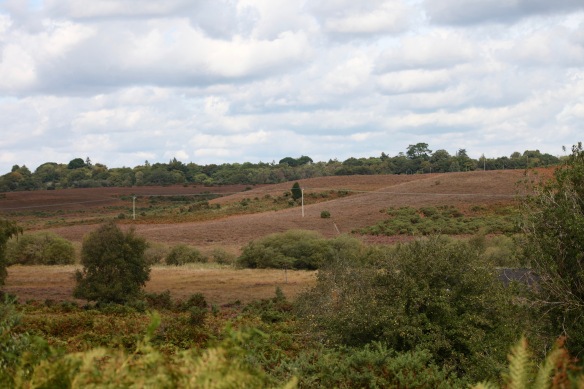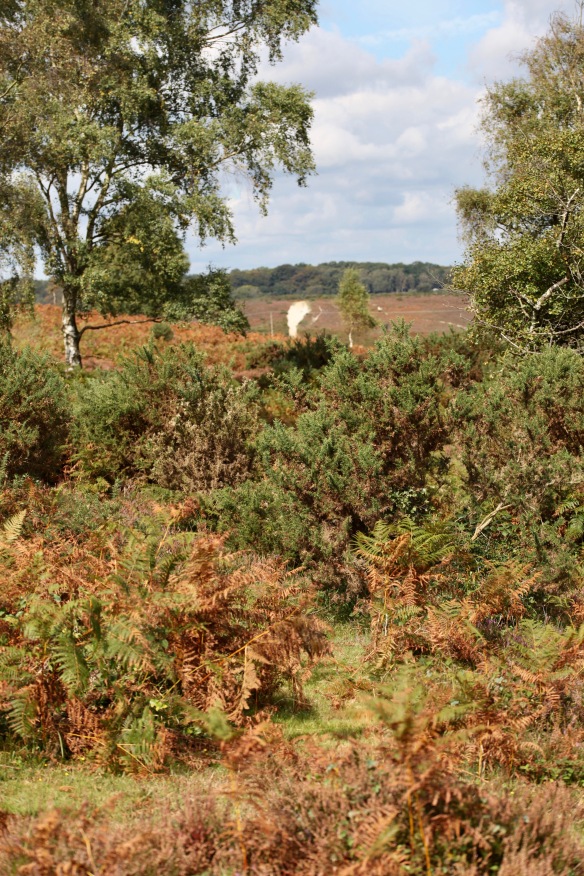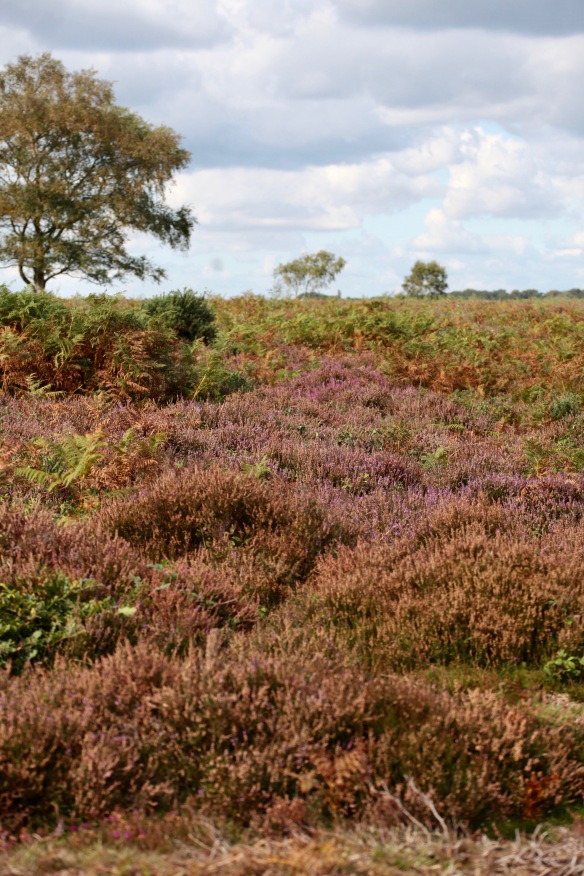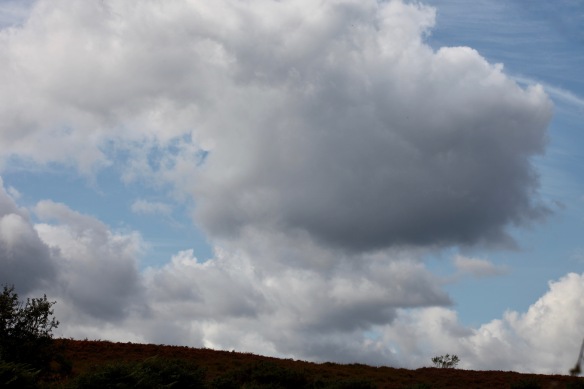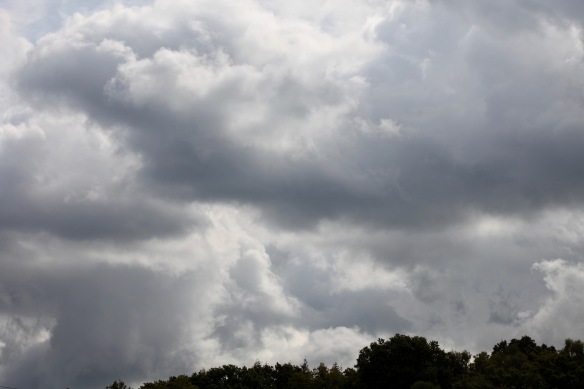CLICK ON IMAGES TO ENLARGE. REPEAT IF REQUIRED
I don’t really remember dreams much, but last night I relived my childhood when everything became smaller as I grew older. In particular, walls I couldn’t scramble up to walk along suddenly became manageable. Was this anything to do with the fact that Jackie needs the work surfaces in the new kitchen to be higher than standard? Especially as I was also working out how to pay for the project?
This morning we travelled by car to Kitchen Makers, discussed the fine details, and paid a deposit for work to commence after Christmas. We then drove on to Hockey’s Farm Shop to buy pork sausages and their splendid Pig ‘n’ Pickles Piccalilli. The sausages were essential because we were to dine on Jackie’s sausage casserole this evening and she had bought vegetarian sausages by mistake. We just had to have some meat ones to go with them.
Holmsley Passage sweeps down
across the moors from the A35 leaving Lyndhurst. I left the road at the top of the slope pictured above, and made my way
[youtube https://www.youtube.com/watch?v=marSWLjaQNw&w=560&h=315]
tripping through the heather, bracken and gorse to the lowest point where Jackie waited to take us onwards. I will let these eloquent landscapes tell their own story.
Mine comes later.
Changeable clouds constantly shifted overhead.
At Hockey’s, where we lunched, alpacas, donkeys, sheep, and horses are near neighbours.
Ducks and geese roam in large pens,
from where they have access to a small pool, today occupied by Khaki Campbell ducks. The pale blue bills of some of these caught my attention.
According to Wikipedia
‘The Khaki Campbell (Anas platyrhynchos domesticus[1] or Anas platyrhynchos Linnaeus[2]) is a breed of domesticated duck that originated in England and is kept for its high level of egg production. The breed was developed by Mrs. Adel Campbell [3] of Uley, Gloucestershire, England at the turn of the 20th century. The “Campbell Duck” being introduced in 1898 [4] and the ‘Khaki’ variety introduced to the public in 1901.[5]
The egg production of the Campbell breed can exceed even the most efficient of egg laying domestic chickens, with the breed laying an average of 300 eggs a year. When provided a moderate “duck conscious” environment to live in they will lay a more than modest number of eggs per week.
Khaki Campbells become mature at approximately 7 months. Khaki Campbell ducks seldom hatch out others’ young; however, in very communal situations do hatch large broods together. Most brooding behavior has been sacrificed in exchange for prolific egg laying ability in this breed. The ducks, when raised by hand, are not usually defensive of their eggs or nests, making collection of eggs very easy. Mechanical incubators or broody chickens are used to hatch out Khaki Campbell ducklings when ducks are not present in the process. Incubation takes approximately 23 to 28 days for a Khaki Campbell duckling to hatch and eggs need to be inspected for ducklings that have not emerged from their egg completely.’
Pumpkins were on sale at the shop.
Roger Penny way stretches for 7 miles between Godshill and Cadnam. For the New Forest it is a comparatively straight, wide, road on which you are permitted to drive at 40 m.p.h. Even if you are adhering to this limit, which many people do not, contact with an animal would do neither creature nor vehicle much good.
Having seen the second Hit and Run notice concerning a dead donkey in under a week, we passed this self evident sign just outside The Fighting Cocks inn. There are warning signs at regular intervals along this unlit thoroughfare.
Not much further along the road we encountered a black cow. Imagine this in the dark.
With a theme gestating in my brain, we spotted, on the brow of a hill, blending nicely with a tree on the verge, a black and grey dappled pony. Had this creature, facing us, not lifted its head, we would not have seen it. This was the very subject I had been looking for. There was nowhere to stop or turn at this point, and, anyway, we had a convoy. Thinking we had probably missed the moment, my driver found a spot at which to turn around, came back to the spot, and stopped a little further on on the opposite verge.
As I approached my prey I noticed that it now had companions.
Suddenly a black one stepped out onto the road.
The dappled grey followed.
The most visible of all was not to be left behind.
As is evident, these animals were in no hurry. Now, imagine it is after sunset. What would you have seen?
The animals have no road sense, and will step out at any moment. Not always in clear sunlight giving bright colours a glow. This last pony emerged from the trees to join the others.
From the first photograph of the three – or was it four? – among the trees, to the colourful chestnut, the time elapsed was no more that a minute.
With this evening’s superb casserole Jackie produced crunchy carrots and cabbage with creamy mash. She drank Hoegaarden and I finished the madiran.



